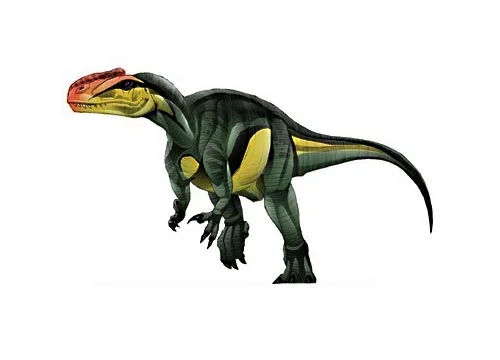Lophostropheus (Crested vertebrae)

Low-foe-stro-fee-us
Martin Ezcurra & Gilles Cuny - 2007
Carnivore
Estimated 6-7 meters long
Large Theropod
L. airelensis (type)
France, Normandy - Moon-Airel Formation, Maphutseng Formation in Lesotho – southern Africa
Late Triassic, 216-209 million years ago
Lophostropheus Facts
Lophostropheus is an extinct genus of early sauropod dinosaur that lived during the Late Triassic period, approximately 216-209 million years ago. The name Lophostropheus means “crested vertebrae,” and refers to the unique features of its backbone.
Lophostropheus was a relatively small sauropod, measuring around 6-7 meters (20-23 feet) in length. It had a long neck, a small head, and a long tail. The most distinctive feature of Lophostropheus was the presence of tall, blade-like neural spines on its vertebrae, which may have supported a sail or hump of skin along its back. The purpose of this sail or hump is not clear, but it may have been used for display or thermoregulation.
Lophostropheus is known from a relatively complete fossil skeleton that was discovered in the Maphutseng Formation in Lesotho, southern Africa. This fossil includes most of the skull, as well as the neck, back, tail, and limbs. It is one of the most complete sauropod skeletons known from the Triassic period.
The discovery of Lophostropheus has provided important insights into the early evolution of sauropod dinosaurs. Sauropods are a group of long-necked, herbivorous dinosaurs that include some of the largest land animals to have ever lived. The discovery of Lophostropheus, along with other early sauropod fossils, has helped to illuminate the early stages of sauropod evolution, and shed light on how these giant animals came to dominate the terrestrial ecosystems of the Mesozoic era.
Overall, Lophostropheus is an important and fascinating dinosaur that provides a window into the early evolution of one of the most iconic groups of dinosaurs.



